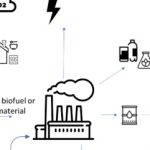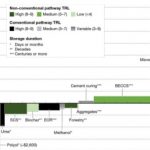In carbon markets such as the EU ETS participants must monitor and report their emissions and ultimately pay for them. Biomass occupies a unique place. It is well positioned to be a net-zero emissions energy source for hard-to-abate sectors. Coupled with effective on-site carbon capture technologies, it can be carbon negative. And there is a great diversity of project types involving forestry, biochar kilns, waste-to-energy, carbon capture and … [Read more...]
What’s Plaguing Voluntary Carbon Markets?
In voluntary carbon markets, buyers (like big companies with emissions) voluntarily purchase and trade in offsets generated from emissions reduction or removal projects elsewhere. And in early 2023 momentum was building for them, but that soon collapsed as evidence of greenwashing grew: forestry programs were significantly overestimating their value. Allegra Dawes at CSIS lays out the background before explaining that systems must be put in place … [Read more...]
EU Carbon Removal Certification Framework: new rules to turn greenwashing into genuine removals
The EU Carbon Removal Certification Framework intends to drive forward technological and natural carbon removals, and prevent greenwashing through robust standards and certification procedures. It’s to deal with the existing poorly monitored carbon removals market: the lack of oversight, transparency, trustworthiness, and genuine climate impact (additionality) of projects and certificates. Simon Göss at carboneer looks at the current proposals, … [Read more...]
Event summary: “Unlocking the potential of Bioenergy”
Sara Stefanini provides a written summary of our panel discussion held on Thursday March 17th 2022. It’s a full summary of the 90 minute discussion (including audience questions), but it begins conveniently with a summary of the highlights (potential for bioenergy, hard-to-abate sectors, sustainability, policy needs). Those highlights include the need to scale bioenergy up from around 50 EJ today to 150 EJ by 2050; the importance of carbon … [Read more...]
Community Biomass: for energy independence, stable prices and local control
Energy independence is now at the top of the EU’s agenda. Almost all Europe’s biomass is already locally produced, contributing around 60% of the EU’s renewable energy. Marine Perrio at IEECP makes the case for promoting biomass prosumer projects. She points at regions dependent on biomass that have reported stable energy prices in the midst of the drastic increases in gas, oil and coal prices. Biomass uses organic feedstock from agriculture, … [Read more...]
Can Carbon Offset loopholes be fixed with better evaluation and rules?
Carbon offset programmes rightly get a lot of criticism. There’s plenty of evidence of offsets not delivering all the GHG emissions reductions they are credited for. Though still on the international agenda, should they be ditched? Or can they be improved with better analysis and evaluation, and making that a pre-condition for creating carbon offset credits, asks Meredith Fowlie at the Energy Institute at Haas. She starts by looking at those … [Read more...]
How much Carbon Capture will Germany need? Both nature-based and technological
Yet more studies have been published that show Germany needs carbon removal to meet its emissions targets. Simon Göss and Hendrik Schuldt at cr.hub add two, from the German Energy Agency and the Ariadne report (funded by the German Ministry of Education and Research), to those that already exist to shine more light on a carbon capture pathway. The main observation is that nature-based solutions (LULUCF: land use, land use change and forestry) … [Read more...]
Land Use and Forestry: existing LULUCF rules allow EU’s carbon sink to decrease. Change them
The EU’s current Regulations for Land Use, Land Use Change and Forestry (LULUCF) allow the region’s carbon sink to decrease, explains Ulriikka Aarnio at CAN Europe. It’s due to exclusions and a lack of transparency and proper accounting for emissions. As a result, the EU’s carbon sink has already decreased significantly in the last few years, extracting only 265 Mt of CO2 in 2019. Different activities both emit and absorb carbon. 2019 saw 135 Mt … [Read more...]
Bioenergy is the undervalued pillar of the clean energy transition
Bioenergy is already the world’s largest source of renewable energy, responsible for 70% of the supply (and around 10% of total primary energy). Burning organic matter goes back to the invention of fire and is still commonplace around the globe. Yet it gets hardly any of the attention and policy support that’s given to other clean energy technologies like solar, wind and now hydrogen. Bioenergy can and should play an even greater role, explain … [Read more...]
10 Carbon Capture methods compared: costs, scalability, permanence, cleanness
We need to understand carbon capture, storage and utilisation (CCUS) better. To do so, this article looks at 10 methods and estimates how much CO2 each will take out of the atmosphere by 2050, and the cost per tonne. In their list the authors, Ella Adlen and Cameron Hepburn at the University of Oxford, cover the industrial (e.g. CO2-EOR, synfuels) to the biological (e.g. forestry, soil carbon sequestration). They say there are six that can be … [Read more...]











